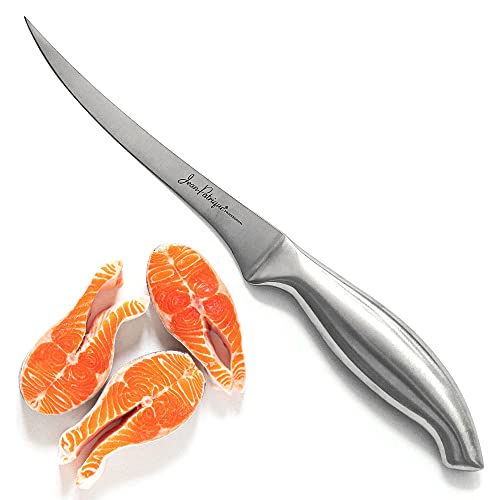Understanding different types of fish knives
Before we dive into the proper cleaning techniques, it’s important to understand the different types of fish knives that are commonly used. From filleting knives to boning knives, each knife is designed for a specific task and requires different cleaning and maintenance methods.
It’s recommended to invest in a high-quality fish knife set with various types of knives to ensure efficient and safe fish preparation without damaging the meat.
Cleaning techniques for fish knives
Proper cleaning of fish knives is crucial to prevent cross-contamination and to maintain sharpness. After use, rinse the knife thoroughly with water to remove any fish residue.
Avoid using soap or harsh detergents, as they can corrode the blade and affect the taste and quality of the fish. Instead, use a soft sponge or cloth with mild dishwashing liquid to gently clean the blade.
Make sure to dry the knife completely with a dry towel to avoid rusting or water stains. Store the knife in a knife block or a sheath to protect the blade and prevent injury.
Maintenance tips for fish knives
To maintain the sharpness and longevity of your fish knives, it’s important to properly care for them. Regularly hone the blade with a honing steel or sharpening stone to remove any nicks or dullness.
Avoid using a sharpening machine, as it can damage the blade and affect the angle of the edge. Also, be careful when using the honing steel or sharpening stone, as incorrect use can also damage the blade.
Additionally, it’s recommended to oil the blade with food-grade mineral oil to prevent rusting and maintain the quality of the knife. Apply a small amount of oil to a soft cloth and rub it evenly on the blade.
Troubleshooting common fish knife issues
If you notice that your fish knife is not performing as well as it used to, there may be some underlying issues that need to be addressed. For instance, if the blade is dull or chipped, it may require professional sharpening or honing.
If the knife handle is loose or damaged, it’s recommended to replace it immediately to avoid injury. Additionally, if the knife blade is corroded, it’s no longer safe for use and should be replaced.
Fish knives are essential tools for any seafood enthusiast, and proper cleaning and maintenance are key to keeping them functioning at their best. By using the correct cleaning techniques, regular maintenance, and troubleshooting common issues, you can extend the lifespan of your fish knives and ensure safe and efficient fish preparation.






